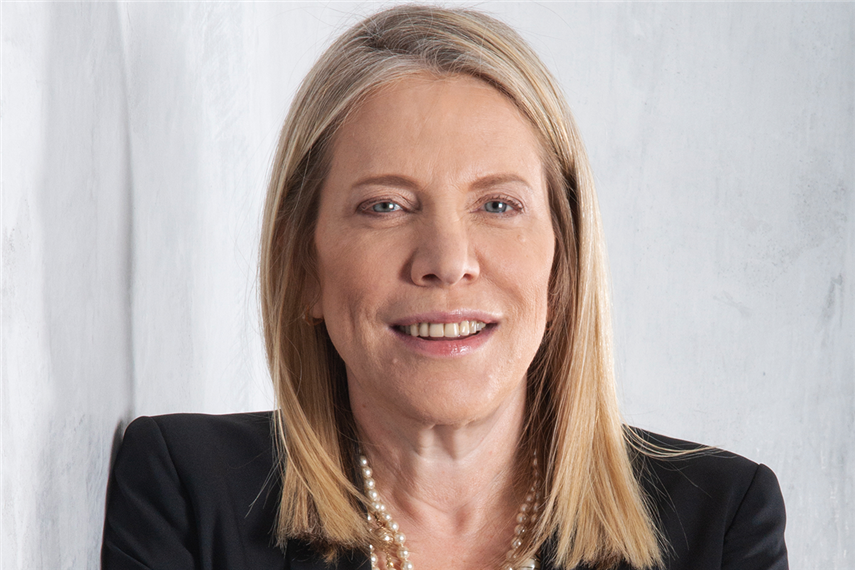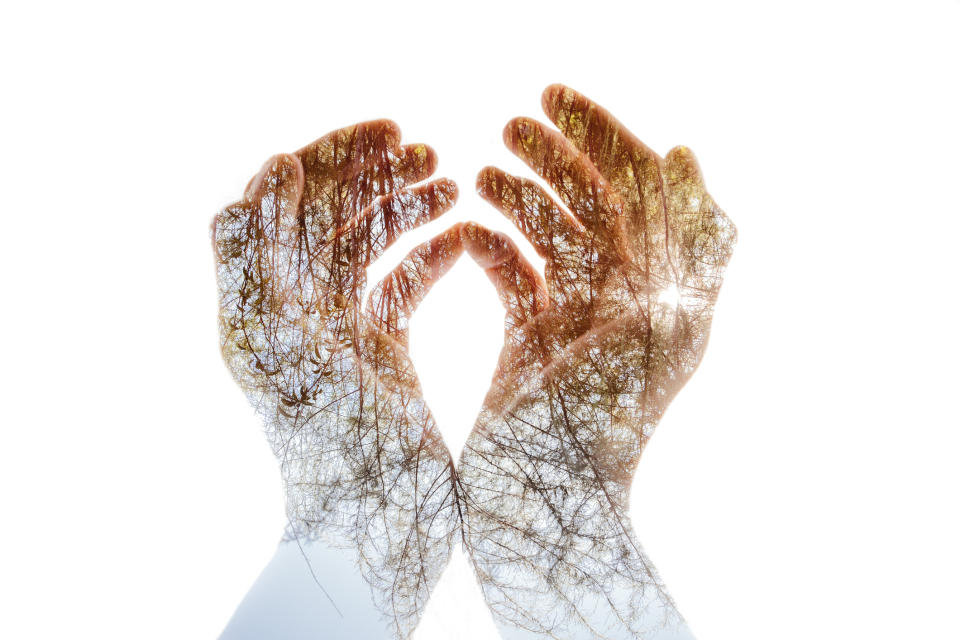Opinion: How to live in 2019, according to trend-spotter Marian Salzman

Written by Susanah Cheok
According to leading global futurist and trend-spotter, Marian Salzman, this year, more than any other time, you’ve got to look back to some extent, to stay ahead of the curve. Back to the future is no longer just a nebulous scientific theory or the premise of a good movie, it’s the reality of knowing what’s in store, so we can ride 2019 smoothly and with greater success.
1. Say It Short and Sharp
Salzman says the death knell of the four Cs – civility, compromise, constraint, conversation – have been sounded, with people communicating in more or less short texts made up of acronyms and emojis; three letters and one sad face say it all. She says, “Today, a conversation is often reduced to a quick text, an urgent command (another C word – but one that’s growing) or an emotion conveyed with an emoticon. And make no mistake, there are emoticons for everything now. There’s even World Emoji Day, and alternatives have popped up like GIFs and musical mentions to insert easily – check out the new app GIFNote – to humanize or soften the message.”
2. Going Glocal
The tragedy of our age is that extreme weather has become the new normal. This reckoning has been a long time coming. The clash of two Titans, Mother Nature versus human nature has come to a head and the result has been the devastation of nature and its resources. While the back-pedaling started decades ago, there seems to be what Salzman describes as “a powerlessness to right the ship”. What’s the world going to do while Salzman foreshadows that “warnings are dire on the economic impacts this growing ecological disaster will have across the globe— with vulnerable supply chains from farmland to shipping ports affecting the livelihoods of millions”? She predicts that we must and will go glocal, as local is the new global, since everything touches and affects everything now. To be effective, what we do parochially must and will impact the world.
3. Inter-planetary Migration
With the world’s resources being rapidly depleted, and given the ongoing search for habitable space in other planets, life on Mars may indeed be a distant reality. “With a full-blown refugee crisis ongoing here on earth, will we be seeing the uber wealthy becoming willing planetary expats?” asks Salzman. “Expect the practical – and ethical – debates to rage on as the privileged upper crust seek sanctuary from coming travail.
4. Divide and Conquer
Conflict and divisiveness will inform 2019. So what’s new, you might well ask, with Brexit still hanging in the balance, with very little “united in the United States”. But the questions to contemplate, says Salzman, are: “When does this disunity erupt into actual skirmishes or more?” It also doesn’t help that “this current (social) media environment rewards divisive behavior and promotes tribalism.” Her take is that “The one thing that we all – left, right and center – may have in common is a constant feeling of embattlement.”
READ MORE:
Cherry blossoms expected to bloom earlier than usual in 2019
Opinion: Why you need to shop consciously, and where to do it
5 interesting beauty looks at Paris Fashion Week: Haute Couture SS19
5. The China Syndrome
China the influencer, mover, and shaker. So what else is new? For a start at least, says Salzman, the people of this big country will “sail through the Suez Canal into Africa and build roads and infrastructure links across the ancient silk road from China through Eurasia, the Middle East and on to Europe” through what’s called the “Belt and Road initiative, hailed as modern history’s most ambitious infrastructure development project.” Big, bold China. But, “some argue that what’s in store is a giant’s decline,” says Salzman, as seen by the fact that “sheer volume doesn’t always a winner make – with the explosion of fintech firms in China being deemed risky.” Whether China has reached its peak is still anyone’s guess is Salman’s overall feeling about this tricky prediction. She cites: “But a caution, courtesy of Dolce & Gabbana, under fire for its ads depicting antiquated stereotypes. The culminations: Ads were pulled, Chinese celebrities canceled their contracts, the brand shelved its Chinese fashion show. Alas, if a brand gets it wrong, one-seventh of the world’s population may be mobilized against you.”
5. Petite Agriculture
Ironically, survival in a land-scarce world brought agriculture and farming from rural to urban sites. Hydroponics and vertical farming broke the agronomic glass ceiling and spawned a new way of consuming food – fresh, natural, from farm to table. Says Salzman, “Ikea is partnering with designer Tom Dixon on a new collection to help make ‘homes the new farmland’. So watch the growth of next-generation appliances that bring hydroponics to the kitchen table (e.g., Babylon Micro-Farms). It’s the ultimate in retro-futurist and a nod back to indigenous people and what they farmed; corn will have a resurgence (health concerns aside) because it is considered hardy – beans, too.”

6. Love and Marriage
While divorce rates are down, the average age of first-marrieds has gone up. Not surprising since “marriage doesn’t seem so obligatory now, and millennials and Gen Z are forgoing it in increasing numbers,” says Salzman. She attributes it to “socio-economic factors working almost directly opposite as they have in the past – rather than those in the lower range marrying young, they are more often choosing not to marry at all. College graduates are more likely to wed than non-grads, but they’re marrying later – and for life” because “people are holding out for ways of being together that reflect who they are and what they want rather than what tradition demands.”
7. Old Is Gold
Even though youth sells, the mantra #BeBoldClaimOld resonates at a time when Sharon Stone and Angela Bassett recently turned 60 and both posted bikini pics to celebrate. Age is no longer associated with decline, but wisdom. Says Salzman, “As we age healthier, it should follow that society recognizes that maturity equals wisdom, and the value of elder statesmen often far outweighs any downside.” But all is not necessarily rosy for valued vintage. Tensions arise through ageism, “which continues to be rampant in more workplaces than not. Multigenerational workforces (and living situations) will be the norm—as elders want to stay vital and active, and youngers will realize they have much to learn from their older colleagues.”

8. Post-Millennial Feminism
Salzman’s bleak and critical prediction is a feminist world that will feel the sting of the backlash of having a voice, being too opinionated, empowered, and too predatory in fact. But the fight for authentic equality and non-discrimination goes on, with Salzman predicting that “still, they (women) are increasingly demanding their fair share of what they’ve worked to create – and the respect they deserve. Watch these times descend into a battle over what that is – their fair share – and how to share it.”
9. Leadership in Flux
Will the version 2019 leader please stand up? That is a tough call to fulfil because the world wants their leaders to have it all – in terms of professional smarts, emotional intelligence, and authenticity. He/she must be capable in a superlative way, yet not be too polished, and should also have the makings of an insurgent, who wears his/her heart on his/her sleeve, and sometimes shoots from his/her hip. Predicts Salzman, “The promoter personality is resurging as voters say yes at the ballot to some ‘straight talkers’. It’s been a long time since we’ve seen such a preponderance of what could charitably be classified as promoters – or, if you’re feeling less charitable, labels like bloviators, narcissists or hucksters would fit the bill. Conflicting ideologies will continue to clash but with more efforts to course correct on choosing – and standing by – leaders.”

10. AI & VR’s Higher Purpose
Smart is still sexy, and that includes artificial intelligence and virtual applications. How would we ever get things done otherwise? AI and what the virtual world has to offer, whether for work or play, has become the new reality. Virtual is real when we meet, chat, work, play and fight with loved ones in both real and virtual worlds, and because our real and virtual lives inevitably converge at some point every day. Says Salzman, “That real-virtual blur we’ve been talking about for a decade or so is increasing – and increasingly important – as clicks become bricks for retailers. VR is still developing: Augmented (mixed) reality is the latest and greatest; it enhances the real world for users. It’s not yet a mature technology – but its uses are many and growing at an exhilarating pace.” And while “businesses are leveraging it to help in training and virtual R&D, among other uses, and consumers are having fun with it – using fitness apps to inspire workouts, style assistants to advise on what to wear and more, VR and AR have the potential to serve a higher purpose, too. It’s been found helpful in treating returning soldiers suffering from PTSD and in treating addiction; it allows people to experience what it’s like living with autism. Add saving the planet to that list – VR can take people to see firsthand the ravages of climate change, and those who want to travel but are concerned about their carbon footprint can visit far-flung locales without worry. Look for virtual travel, particularly, to really take off.”
11. Apocalypse, Now?
Fact is that in the third quarter of 2018, the Doomsday Clock was moved up by 30 seconds, to 2 minutes to midnight, the closest it has ever been since the Cold War era in the 1950s. Isaac Newton’s prediction writings that the world will end in 2060 were also discovered in the third quarter of last year. End of times: fact, or just fiction formed from the figments of imagination of TV and movie producers of apocalyptic films? Salzman’s take: “A telling sign of these apocalyptic times: There’s not too much dispute on ‘are we’ or ‘aren’t we’ heading to Armageddon, but rather how the message is being conveyed. Something like worry fatigue sets in; if we feel like all is lost, why go out of our way to turn the tide? Expect retailers to take full advantage: ‘going out of business’ sales could morph into ‘end of the world’ extravaganzas – after all, stores need to clear shelves ahead of doomsday.”

